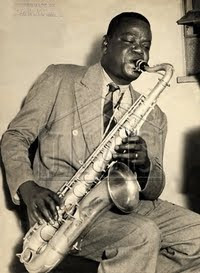Violão Sete Cordas
 The Brazilian 7-string guitar (violão de 7 cordas) is an acoustic guitar used primarily in choro and samba. It was introduced to Brazil in the early 20th century as a steel string guitar. The style of "baixaria" counterpoint and accompaniment technique was developed throughout the 20th century, especially by Dino 7 Cordas and Raphael Rabello. In the early 1980s, guitarist Luiz Otavio Braga had a nylon string version made, and this has become the norm for most contemporary choro musicians such as Yamandú Costa. - The Brazilian 7-string guitar is typically tuned like a classical guitar, but with an additional C below the low E as follows: C-E-A-D-G-b-e; although some musicians tune the C down to a B resulting in B-E-A-D-G-b-e. (info excerpted from Wikipedia)
The Brazilian 7-string guitar (violão de 7 cordas) is an acoustic guitar used primarily in choro and samba. It was introduced to Brazil in the early 20th century as a steel string guitar. The style of "baixaria" counterpoint and accompaniment technique was developed throughout the 20th century, especially by Dino 7 Cordas and Raphael Rabello. In the early 1980s, guitarist Luiz Otavio Braga had a nylon string version made, and this has become the norm for most contemporary choro musicians such as Yamandú Costa. - The Brazilian 7-string guitar is typically tuned like a classical guitar, but with an additional C below the low E as follows: C-E-A-D-G-b-e; although some musicians tune the C down to a B resulting in B-E-A-D-G-b-e. (info excerpted from Wikipedia)  It is generally accepted that the first to introduce and use the 7-string guitar in choro was Tute (Artur de Souza Nascimento, 1886-1957). Tute had an extra string (in low C) added to the normal 6 string guitar thus giving birth to the violão sete cordas. He was also stylistically important, defining the role of the accompanist with the baixarias (basslines) classic in the choro style, now adapted to the violão thanks to the seventh string. - When still very young, Tute became a member of the Banda do Corpo de Bombeiros under the conductor Anacleto de Medeiros, playing cymbals and bass drum. As a violonista, he was a member of the orchestra of the sophisticated Cine-Teatro Rio Branco, conducted by Paulino Sacramento. In one of the absences of the renowned flutist Antônio Maria Passos, he introduced the then-15-year-old Pixinguinha to the theater owners and to the conductor. Pixinguinha grabbed the gig due to his extraordinary sight-reading and improvisational skills. - As a member of Grupo Chiquinha Gonzaga with Antônio Maria Passos, Nelson dos Santos Alves (cavaquinho), and sometimes the legendary Chiquinha at the piano, Tute and the group recorded several 78 rpms for Columbia and Odeon in the early decades of the 20th century. An accomplished accompanist, Tute was often requested in early recordings. As a banjoist, he was a member of Orquestra Copacabana. As a violonista, Tute was a member of the renowned Pixinguinha-groups Grupo da Guarda Velha, Os Cinco Companheiros, Gente Boa, and Orquestra da Victor. Tute worked actively in two important radio venues of Rio, Rádio Mayrink Veiga and Rádio Nacional, from 1929 to 1945, being the permanent accompanist of the mandolinist Luperce Miranda. With Miranda, Tute accompanied Francisco Alves, Mário Reis and Carmen Miranda. (info excerpted from article by Alvaro Neder in AMG)
It is generally accepted that the first to introduce and use the 7-string guitar in choro was Tute (Artur de Souza Nascimento, 1886-1957). Tute had an extra string (in low C) added to the normal 6 string guitar thus giving birth to the violão sete cordas. He was also stylistically important, defining the role of the accompanist with the baixarias (basslines) classic in the choro style, now adapted to the violão thanks to the seventh string. - When still very young, Tute became a member of the Banda do Corpo de Bombeiros under the conductor Anacleto de Medeiros, playing cymbals and bass drum. As a violonista, he was a member of the orchestra of the sophisticated Cine-Teatro Rio Branco, conducted by Paulino Sacramento. In one of the absences of the renowned flutist Antônio Maria Passos, he introduced the then-15-year-old Pixinguinha to the theater owners and to the conductor. Pixinguinha grabbed the gig due to his extraordinary sight-reading and improvisational skills. - As a member of Grupo Chiquinha Gonzaga with Antônio Maria Passos, Nelson dos Santos Alves (cavaquinho), and sometimes the legendary Chiquinha at the piano, Tute and the group recorded several 78 rpms for Columbia and Odeon in the early decades of the 20th century. An accomplished accompanist, Tute was often requested in early recordings. As a banjoist, he was a member of Orquestra Copacabana. As a violonista, Tute was a member of the renowned Pixinguinha-groups Grupo da Guarda Velha, Os Cinco Companheiros, Gente Boa, and Orquestra da Victor. Tute worked actively in two important radio venues of Rio, Rádio Mayrink Veiga and Rádio Nacional, from 1929 to 1945, being the permanent accompanist of the mandolinist Luperce Miranda. With Miranda, Tute accompanied Francisco Alves, Mário Reis and Carmen Miranda. (info excerpted from article by Alvaro Neder in AMG)
The best known player of the violão sete cordas probably is Horondino José da Silva (aka Dino Sete Cordas, 1918-2006). Dino Sete Cordas was the developer of the seven-string style proposed by Tute. In more than 70 years of active and uninterrupted professional activity, he accompanied uncountable important artists from several different generations and styles, arranging and orchestrating for recordings as well. His co-work with Jacob do Bandolim as a member of Epoca de Ouro and later with Raphael Rabello in a duo-setting stands out as magnificent examples of his development of the way to play the violão sete cordas, and his importance in Brazilian music tradition is still highly regarded. Read more about Dino's importance as a 7-string guitar player clicking here
Here is a video paying homage to Dino Sete Cordas
Jo



1 Comments:
Great fiery playing! Love this!
Post a Comment
<< Home